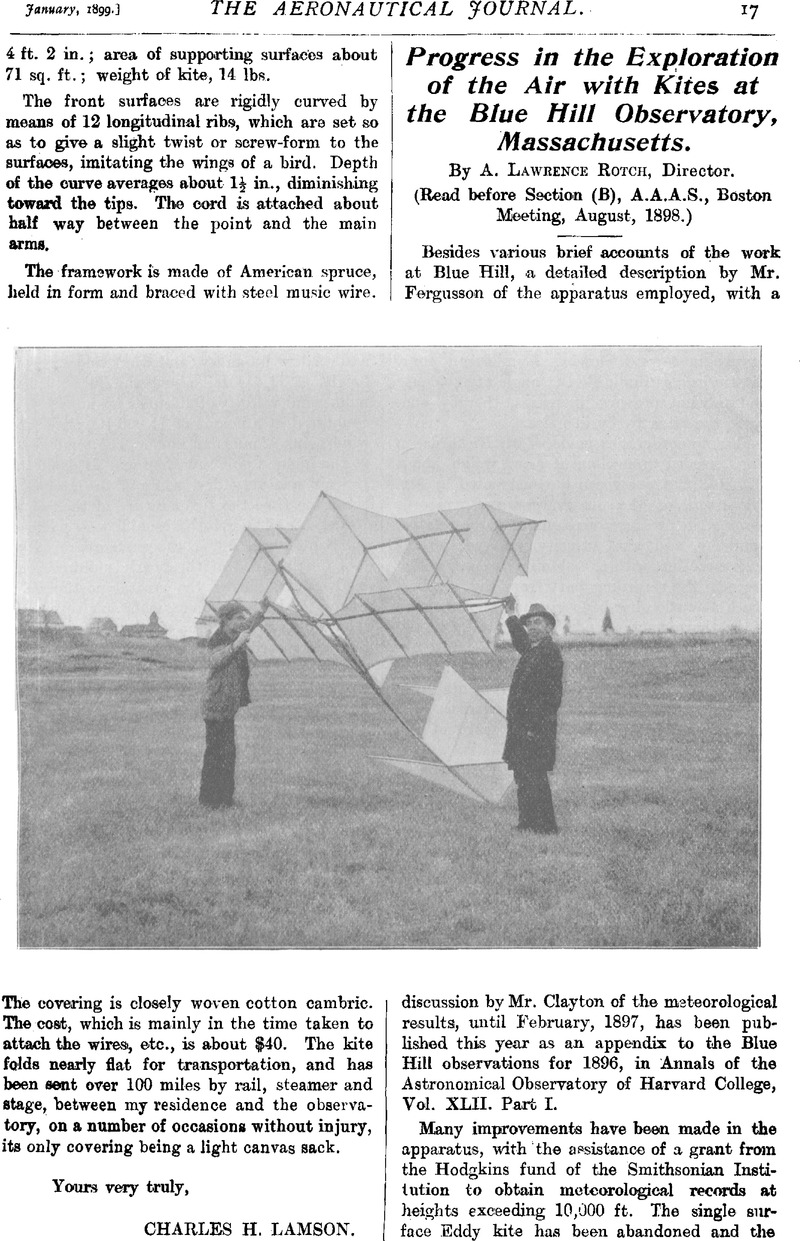No CrossRef data available.
Published online by Cambridge University Press: 14 September 2016

Note on page 18 * The standard size adopted for all Weather Bureau kite stations gives about 70 square feet of surface and weighs about 8 pounds. The Marvin meteorograph weighs about 2.1 pounds and records continuously wind velocity, barometric pressure, air temperature, and relative humidity. The apparatus was designed specially for daily ascensions up to 5,000 feet, at a regular time of day at numerous stations. Frequently 8,000 feet is attained, but higher flights are not sought for at present.† The superiority of one large kite over a tandem of several small ones was early shown by Professor Marvin.—ED. Monthly Weather Review
Note on page 18 † “Sometimes” should perhaps be substituted for “frequently.” Greater altitudes can hardly be attained with a single kite.—A. L. R.